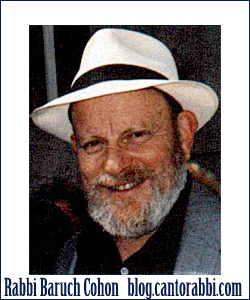BLESSINGS AND MUSIC – A Naso blog sequel – by Rabbi Baruch Cohon
The Priestly Benediction, whether pronounced by descendants of Aaron or by clergymen, calls for an accepting answer from those being blessed. And in synagogue practice it also includes music.
Rockdale Avenue Temple in Cincinnati was a model of Classical Reform as I remember it in the ‘30’s. Among the minimal uses of Hebrew in its festival services came the Priestly Benediction, recited by the rabbi in stentorian tones (remember this was before the days of most microphones.) After he said the first line, we heard the four church singers in the choir loft in perfect harmony: “The Lord bless thee and keep thee.” Each line got a corresponding answer. Three lines. Three angelic-sounding musical responses delivered in a classical major cadence. A spell was cast.
At the other pole of observance, at the Chabad synagogue where I took part in the blessing this Shavuot morning, the prayer leader gave us a melody to introduce each word, excepting only the Divine Name. Two trademark Chabad melodies alternate, and the cohanim all have to know what phrases to repeat. At the end of each line, some 150 voices chant “Amen” – in some 150 keys—with spirit. When we conclude the blessing, congregants shake our hands to show their appreciation.
Between these two poles we find musical expressions ranging from medium to minimal to missing. Many synagogues have the cohanim sing a melody just before the last word of each line. Others have the cohanim do a plain repetition of the cantor’s chant on each word, and the congregation responds with the words Ken y’hee ratzon – “May it be G-d’s will.” All traditional synagogues, and any liberal ones who follow the custom, have the cohanim repeat each word that the cantor chants, symbolizing the idea that they are not the source of the blessing. They are the conduit. Musically, physically and conceptually, we ask Divine blessing on each other. And by our positive answer we express the confidence that we will succeed.
The process of cohanim blessing the congregation is called dukhenen. Experience it, next High Holidays and Succoth, whether you are a cohen and can relay the blessing or a congregant who can receive it. Feel the vibration.
You can contact Rabbi Baruch Cohon for further discussion and/or comments at: baruch.c.2011@gmail.com


